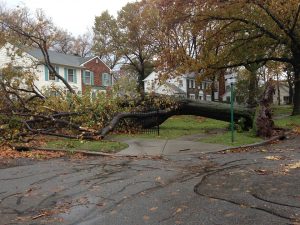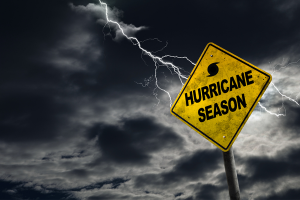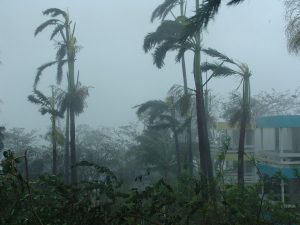 Courtesy of iii.org
Courtesy of iii.org
- Florida accounted for 13 percent of all U.S. insured catastrophe losses from 1987 to 2016: $70.8 billion out of $364.3 billion, based on data from the PCS division of ISO. (Adjusted for inflation by ISO using the GDP implicit price deflator.)
- Six of the 10 costliest hurricanes in U.S. history have impacted Florida. Four of these storms occurred within just two years: 2004 and 2005. (See chart.)
- The costliest hurricane, based on insured property losses to Florida, was 1992’s Hurricane Andrew. It caused $25.4 billion in damage to Florida and Louisiana (in 2018 dollars). (See chart.)
- Standard homeowners policies typically do not cover flood damage. Flood insurance is covered by the federally managed National Flood Insurance Program, but private flood insurance is becoming increasingly available.
- Florida leads the nation in the number of flood policies, according to the National Flood Insurance Program, with about 1.8 million policies in force in 2017.
- The number of people living in coastal areas in Florida increased by 4.2 million, or 27 percent, from 15.6 million in 2000 to 19.8 million in 2015, according to the U.S. Census Bureau. About 98 percent of the total population of Florida lives in one of the coastal counties.
- In Florida, 2.8 million homes were at risk in 2018 for storm surge damage from hurricanes up to Category 5 strength, according to CoreLogic, Inc. These homes would cost $552.4 trillion to completely rebuild, including labor and materials.
- Given the growth in the number and value of insured property, a repeat of the hurricane that devastated Miami in 1926 would have resulted in approximately $130.2 billion in insured damage in 2016, according to Karen Clark and Co.
- After its establishment in 2002, when the state passed legislation combining two separate high-risk insurance pools known as the Florida Windstorm Underwriting Association and the Florida Residential Property & Casualty Joint Underwriting Association, Citizens Property Insurance Corp. (CPIC) experienced exponential growth. As a result, Florida Citizens has evolved from a market of last resort to the state’s largest property insurer.
- Florida Citizens Property Insurance Corp. provides multiperil and wind-only insurance coverage to Florida homeowners, commercial residential and commercial business property owners.
- Direct homeowners insurance premiums in Florida written by Citizens was $460.9 million in 2017 down from $795 million in 2014.
- Citizens was the state’s fourth leading homeowners insurer in 2017, with a market share of 5.0 percent, down from 9.1 percent in 2014.
- Florida Citizens had 482,765 policies with an exposure of $112.3 billion in fiscal year 2017, according to the Property Insurance Plans Service (PIPSO).


